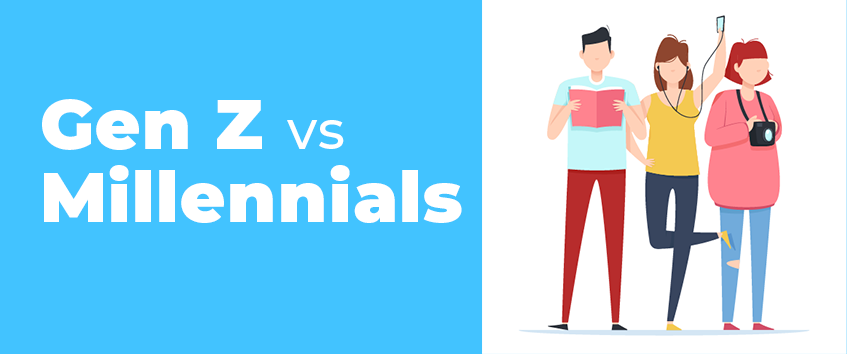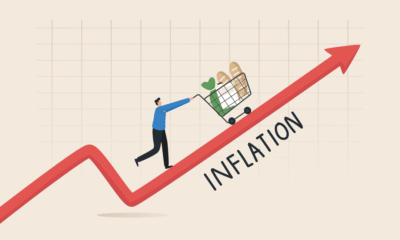Personal Finance
Top 10 Side Hustles in the US Making People Rich in 2025

Introduction to Side Hustles
In recent years, the concept of side hustles has gained significant traction within the contemporary economic landscape. A side hustle refers to any income-generating activity undertaken outside of one’s primary job. As individuals strive for financial independence and seek alternative revenue streams, side hustles have emerged as a viable solution to enhance personal finances. This trend is not just a fleeting phase; rather, it represents a shift in how people view work, income, and entrepreneurship.
The increasing cost of living and uncertainties in traditional employment have prompted many to explore various avenues beyond their primary sources of income. This shift underscores the economic significance of side hustles, as they often serve as a platform for creativity, allowing individuals to pursue their passions while securing additional income. Furthermore, side hustles are increasingly associated with the principles of entrepreneurship, encouraging individuals to turn hobbies or skills into profitable ventures.
As a result, many are leveraging digital platforms to initiate side hustles, making the barriers to entry lower than ever before. Online marketplaces, social media, and various e-commerce tools have simplified the process, enabling people to tap into their unique talents effectively. The expansion of technology has empowered aspiring entrepreneurs to operate businesses that cater to niche markets, ultimately diversifying their income sources while minimizing financial risk.
As we delve into the specifics of the top ten side hustles expected to flourish in the year 2025, it is essential to recognize that this trend reflects a broader societal move towards self-reliance and personal fulfillment. Side hustles are not merely additional jobs; they signify a proactive approach to income generation and financial stability in an ever-evolving economy.
The Rise of the Gig Economy
The gig economy has experienced significant growth in recent years, becoming an integral part of the labor landscape in the United States. With the advent of various digital platforms and applications, individuals now have unprecedented access to flexible job opportunities. This transformation in the employment sector has enabled many to engage in side hustles, enhancing their financial prospects alongside traditional employment.
According to recent statistics, over 36% of the US workforce is now engaged in gig work, with projections suggesting this number will continue to rise. The increasing number of gig workers reflects a mentality shift toward valuing flexibility and autonomy over conventional career paths. Platforms such as Uber, Lyft, and Upwork have revolutionized the ability to generate income, allowing users to select their hours and projects that align with their skills and preferences.
The influence of technological advancements cannot be overstated in this context. With smartphones and high-speed internet access, tasks can be completed remotely, and interactions can occur instantly. This has enabled gig workers to connect with potential clients and customers effortlessly, broadening their reach and opportunities. Specialized apps catering to various skills—from graphic design to food delivery—have simplified the process of finding work, leading to a surge in the freelance and contract economy.
Moreover, the gig economy provides an essential safety net for individuals seeking to diversify their income sources. As economic uncertainty looms, many are turning to side hustles that can potentially supplement their primary income or serve as a primary revenue stream. Such adaptability is increasingly desirable in modern employment scenarios, thereby solidifying the gig economy’s presence as a vital component in the quest for financial independence.
Why Side Hustles Matter in 2025
As we move toward 2025, the financial landscape for individuals in the United States is projected to be both challenging and dynamic. The surge in inflation rates, coupled with economic fluctuations, demands that individuals adopt innovative strategies to secure their financial futures. In this environment, side hustles are poised to become an essential tool for combating financial instability. Taking on secondary income streams can help mitigate the impact of rising living costs and unexpected expenses that may arise in daily life.
For many, traditional employment is no longer a stable or sufficient source of income due to factors such as job insecurity and evolving workforce paradigms. As corporate structures shift and automation advances, individuals may find themselves at risk of underemployment or sudden job loss. This unpredictability reinforces the importance of diversifying income sources through side hustles. By exploring various side projects, individuals can create alternate revenue streams that may offer greater financial security and peace of mind.
Moreover, side hustles present an opportunity for personal and professional growth. They offer individuals a chance to explore their passions, engage in entrepreneurial ventures, and develop new skills—all of which can contribute to overall wealth accumulation. As financial goals become more ambitious in a world that values adaptability, side hustles allow individuals to pursue their aspirations outside of their primary jobs.
In light of these circumstances, a robust side hustle can significantly enhance a person’s ability to weather economic storms and invest in their future. The significance of side hustles in 2025 cannot be overstated, as they are increasingly viewed as not just an option but a necessity for financial stability and wealth building in a rapidly changing economic environment.
Top 10 Side Hustles Overview
As the landscape of work continues to evolve, side hustles have gained significant traction as a means for individuals to supplement their income, explore passions, or achieve financial independence. In 2025, several side hustles are anticipated to stand out due to their market demand, scalability, and potential profitability. Here, we delve into the top ten promising side hustles projected to flourish, catering to a diverse range of interests and skillsets.
One of the notable side hustles is digital marketing consultancy, which leverages the explosive growth of online businesses. Entrepreneurs in this field can expect considerable earnings by helping companies navigate complex online landscapes, from social media strategies to SEO optimization. Alongside this, e-commerce entrepreneurship continues to rise, with platforms allowing individuals to sell products globally. The accessibility of drop shipping and print-on-demand services makes this side hustle increasingly appealing.
Another burgeoning area is content creation, where aspiring creators can monetize their skills in writing, videography, or podcasting. With platforms that enable content sharing and sponsorships, the income potential is vast for those who can cultivate a loyal audience. Real estate investment, particularly in rental properties and house flipping, proves lucrative as property values soar in many areas, attracting those interested in long-term wealth accumulation.
Furthermore, mobile app development is capturing the attention of tech-savvy individuals, allowing them to create innovative solutions or entertainment platforms that can yield significant returns. Likewise, the gig economy’s growth has paved the way for freelance services, whether in design, writing, or programming, providing flexibility and diverse income opportunities.
Alongside these, emerging technologies are fostering innovations like virtual tutoring, where expertise in various subjects is shared through online platforms, catering to an ever-expanding audience. Personal finance coaching also emerges as individuals seek to navigate their financial journeys amidst economic fluctuations. Lastly, sustainable product creation aligns with consumer preferences for environmentally conscious goods, making it an attractive option for eco-focused entrepreneurs.
These side hustles not only reflect current trends but also demonstrate the potential for enhancing one’s financial stability in 2025 and beyond. Each presents unique opportunities and challenges, paving the way for diverse entrepreneurial journeys.
Freelance Digital Marketing
Freelance digital marketing has emerged as a lucrative side hustle, attracting individuals eager to capitalize on their skills in an increasingly digital world. This field encompasses various disciplines, requiring expertise in social media management, search engine optimization (SEO), content creation, and online advertising. As businesses strive to enhance their online presence, the demand for skilled freelancers continues to grow, presenting substantial earning opportunities.
Individuals looking to break into freelance digital marketing should first assess their strengths and interests. For instance, those with strong communication skills may excel in social media management, creating engaging content for various platforms while interacting with audiences. Others may find their niche in SEO consultancy, helping clients optimize their websites for better search engine rankings. Building a portfolio showcasing previous work and successful campaigns is crucial to attracting potential clients.
Potential earnings in freelance digital marketing can vary significantly. Entry-level freelancers may charge hourly rates ranging from $25 to $50, while seasoned professionals often command rates between $100 to $300 per hour based on expertise and the complexity of the projects. Additionally, long-term contracts or retainer agreements can provide a more stable income stream, allowing freelancers to build lasting relationships with businesses.
Success stories abound in the freelance digital marketing realm. Many individuals have transitioned from traditional jobs to a thriving freelance career, leveraging their marketing skills to achieve financial independence. For example, a social media manager who began part-time found their clientele expanding rapidly, eventually turning their side hustle into a full-time venture. Overall, freelance digital marketing presents a promising opportunity for those willing to invest in continual learning and adaptability to emerging trends in the digital landscape.
E-commerce and Dropshipping
In recent years, e-commerce and dropshipping have emerged as lucrative side hustle opportunities for aspiring entrepreneurs. Setting up an e-commerce store is relatively straightforward, especially with the rise of platforms like Shopify, WooCommerce, and BigCommerce, which provide user-friendly interfaces for store creation. To begin, entrepreneurs should first identify a niche market that aligns with their passions or interests. This can significantly enhance brand authenticity and customer connection.
Once the target audience is defined, the next step is sourcing products. Dropshipping allows sellers to offer products without holding inventory, as suppliers handle storage and shipping. Popular platforms for finding reliable suppliers include AliExpress, SaleHoo, and Oberlo. It is crucial to vet suppliers to ensure product quality and timely shipping. Building a solid relationship with suppliers can lead to better pricing and customer service, further enhancing the business’s viability.
Marketing plays a pivotal role in the success of an e-commerce business. Effective strategies include social media marketing, email campaigns, and search engine optimization (SEO). Utilizing platforms like Instagram and Facebook can help reach broader audiences. Additionally, creating compelling content around products can improve search rankings and drive traffic to the store. Engaging customers through promotions, discounts, and loyalty programs can also boost sales and foster customer retention.
Customer service is a vital aspect that should not be overlooked. Providing prompt responses to inquiries and addressing customer concerns can lead to positive experiences and repeat business. Successful dropshippers often share their experiences, including stories from businesses that scaled significantly by prioritizing these three components: niche selection, marketing strategies, and exceptional customer service. By implementing these steps, individuals can capitalize on the growing e-commerce market and potentially achieve substantial financial rewards.
Content Creation and Influencer Marketing
In today’s digital landscape, content creation and influencer marketing have emerged as powerful avenues for generating income. With platforms such as YouTube, Instagram, and TikTok, individuals are increasingly leveraging these channels to develop their personal brands. The foundation of this side hustle lies in producing high-quality content that resonates with a targeted audience. This can take various forms, including blogging, vlogging, and podcasting, where creators share insights, entertainment, or educational material tailored to their niche.
Building a personal brand is key in this endeavor. It requires a consistent aesthetic, voice, and content style that audiences can identify with. Successful content creators often engage with their followers through regular updates and interactive experiences, fostering a sense of community. As followers grow and engagement increases, opportunities for monetization arise. Influencers are frequently approached by brands for sponsorships, collaborations, and affiliate partnerships. The influencer marketing industry has seen exponential growth, with estimates indicating it could reach over $15 billion by 2025.
Monetizing content effectively involves a multi-faceted approach. Creators can diversify their income streams through various channels, including merchandise sales, subscription services, and ad revenues. For instance, platforms like Patreon allow fans to support creators directly, ensuring a steady income. Additionally, leveraging analytics tools to understand audience demographics and preferences can guide content strategy, making it more appealing to potential sponsors.
Statistics indicate that top-tier influencers can earn six-figure incomes, further emphasizing the financial viability of this side hustle. Moreover, the ongoing shift toward digital consumption suggests that opportunities within content creation will only continue to expand. As individuals invest time and effort into cultivating their online personas, the potential to generate significant income grows, marking content creation and influencer marketing as a lucrative choice for those aspiring to thrive financially in 2025.
Virtual Assistance Services
In recent years, the demand for virtual assistance services has surged, illustrating a significant shift towards remote work and online business support. As companies strive to streamline operations and cut overhead costs, they increasingly rely on virtual assistants (VAs) for various administrative tasks, from scheduling appointments and managing emails to more specialized functions like social media management and project coordination. This trend indicates that proficient virtual assistants are becoming essential assets for businesses striving for efficiency and growth.
To identify a niche within the virtual assistance landscape, it is vital to assess your skills and interests. Consider areas where you excel or have experience, such as content creation, digital marketing, or customer service. Choosing a specific niche allows you to tailor your services and expertise, ultimately making you more attractive to potential clients. For instance, if you have a background in social media, you can position yourself as a social media manager, helping businesses develop their online presence.
Setting competitive and fair rates is another crucial element to consider when starting a virtual assistance business. Research market rates for VAs in your chosen niche, and price your services accordingly. Depending on your experience and the complexity of the work, rates can range from $20 to $100 per hour. Many successful virtual assistants recommend offering package deals or retainer options to encourage long-term client commitments.
Building a client base takes time and persistent marketing efforts. Networking online via platforms like LinkedIn, social media groups, and freelance job boards is essential. Many virtual assistants have found success through word-of-mouth referrals, emphasizing the importance of providing excellent service and maintaining professional relationships. Testimonials from satisfied clients can further enhance credibility, establishing trust and encouraging new client inquiries.
Real Estate Investments
In 2025, real estate investments have emerged as a prominent side hustle for individuals looking to enhance their income and build wealth. This avenue encompasses various strategies, including short-term rentals, property flipping, and house hacking, each offering unique benefits and challenges. As more people seek to capitalize on the lucrative real estate market, understanding these strategies is essential.
Short-term rentals, facilitated by platforms like Airbnb and Vrbo, have gained enormous popularity. This approach enables investors to lease out properties for short durations, thus maximizing occupancy rates and revenues. Investors must consider factors such as location, property amenities, and local regulations to be successful in this competitive space. With the ongoing rise of the remote workforce, demand for short-term stays continues to surge, making this strategy particularly promising.
Property flipping has become another viable method for generating income through real estate. This technique involves purchasing undervalued properties, renovating them, and selling them for a profit. Successful flippers conduct extensive market research to identify up-and-coming neighborhoods and evaluate potential costs of improvements to ensure a profitable outcome. As market conditions evolve in 2025, keen investors adapt their strategies to capitalize on emerging trends, ensuring they stay ahead in this lucrative market.
House hacking is a strategy that allows investors to reduce living expenses by renting part of their primary residence. This approach not only generates additional income but also helps homeowners build equity. By leveraging equity in their own homes, individuals can effectively enter the rental market with minimal financial risk.
Financial considerations are imperative for any real estate investment. Investors should be aware of the potential costs associated with property management, taxes, and maintenance. Furthermore, data-driven market trends in 2025 suggest a strong demand for rental properties, making real estate a reliable option for building wealth. Case studies of successful investors highlight the potential profitability of these strategies and the importance of sound financial planning.

Finance & Investment
Central Banks Cut Rates Amid Global Risk Surge: A Coordinated Policy Shift in Uncertain Times

In a rapidly evolving global financial landscape, central banks across the world are beginning to shift gears. The recent decisions by the Swiss National Bank and Norges Bank (Norway’s central bank) to cut interest rates have marked a significant turning point in the global monetary cycle. These moves, driven by a mix of inflation stabilization and rising geopolitical threats, come at a time when the global economy is grappling with war, trade tensions, and an uncertain inflation outlook. The coordinated nature of these central bank rate cuts, especially in contrast to the U.S. Federal Reserve’s cautious pause, has opened the door to a new debate: are we heading into a global monetary easing cycle, or are these cuts short-term defensive maneuvers?
Swiss and Norwegian Rate Cuts Signal a New Monetary Direction
In June 2025, both Switzerland and Norway made headlines by cutting their benchmark interest rates by 25 basis points. The Swiss National Bank (SNB), often seen as a conservative institution, cited easing inflation and growing global instability as primary reasons behind its surprise cut. It marked Switzerland’s second rate reduction in the span of four months, bringing its policy rate to 1.25%. At the same time, Norges Bank announced a rate cut to 3.75%, acknowledging weakening domestic demand and export headwinds due to escalating geopolitical concerns, especially those tied to the Middle East conflict and disrupted trade routes.
The rate cuts have been interpreted as part of a broader pivot toward monetary easing among developed economies. With inflation showing signs of tapering off and economic risks resurfacing due to war and trade barriers, central banks are cautiously shifting from a defensive stance to one that supports growth and liquidity.
The European Central Bank Leads with Early Easing
Earlier in June, the European Central Bank (ECB) took the lead by initiating its first interest rate cut in years, trimming its main deposit rate by 25 basis points. ECB President Christine Lagarde emphasized that while inflation has cooled across the Eurozone, the outlook remains fragile due to global instability and continued uncertainty around commodity prices and supply chains. The ECB’s decision was widely welcomed by European equity markets, with banking and real estate sectors showing notable gains.
More importantly, the ECB’s move has emboldened other regional central banks to reevaluate their positions. Economists believe that the ECB has opened the window for an easing cycle in Europe, which could eventually include further rate cuts if inflation remains in check and economic growth stalls.
The Federal Reserve Holds but Sends Mixed Signals
In contrast to the dovish tone in Europe, the U.S. Federal Reserve opted to hold interest rates steady in its most recent FOMC meeting. Fed Chair Jerome Powell acknowledged the progress in curbing inflation but cautioned against premature easing given the resilience of the U.S. labor market and lingering price pressures in housing and services. However, Powell also hinted that further tightening is unlikely unless inflation reaccelerates.
While the Fed’s “pause” is not a pivot, it reflects a wait-and-see approach in the face of rising global risks. Markets are pricing in potential rate cuts by the Fed later in the year, especially if economic indicators show signs of weakness or if international tensions further dent consumer confidence and spending.
Why Central Banks Are Becoming More Cautious
The world is facing a convergence of risks that are prompting central banks to rethink their strategies. Firstly, geopolitical tensions, especially the conflict involving U.S. strikes on Iran, have driven up oil prices, raised safe-haven demand, and disrupted key trade corridors. Secondly, trade-related uncertainties—such as new tariffs proposed between the U.S. and China, and disruptions in shipping lanes—are threatening global supply chains and business confidence. Lastly, growth momentum in major economies like Germany, Japan, and the UK has slowed, reinforcing the case for proactive monetary support.
In this context, the rate cuts by Switzerland, Norway, and the ECB are not just economic tools but strategic moves aimed at providing a buffer against rising instability. Central banks are realizing that holding rates too high for too long might tip their economies into unnecessary recession, especially when inflation appears to be softening on its own.
Impact on Currency and Bond Markets
These shifts in interest rate policy are having profound effects on currency and fixed-income markets. The Swiss franc weakened slightly against the euro following the SNB cut, making Swiss exports more competitive but increasing import costs. Meanwhile, bond yields across Europe declined as investors began pricing in more accommodative monetary policy ahead.
In the U.S., Treasury yields remained relatively stable, reflecting the Fed’s neutral stance. However, analysts are closely watching any signs of dovishness that could push bond prices higher. In emerging markets, the combination of developed-world rate cuts and a stronger dollar continues to create a volatile environment, as capital flows adjust and central banks in countries like India and Brazil weigh their next moves.
Global Inflation Outlook: Stabilization or Surprise Rebound?
While inflation has moderated in many economies, the risk of a renewed inflation surge remains due to volatile commodity prices, especially energy. The recent oil price spike triggered by Middle East tensions threatens to drive up transportation and manufacturing costs globally. Additionally, labor shortages in developed markets continue to exert upward pressure on wages, a trend that could eventually feed back into core inflation metrics.
Still, central banks appear confident that the worst of the inflation cycle is behind us. Eurozone inflation has dropped below 3% for the first time since 2021, and Switzerland’s CPI now hovers around 1.8%, well within target. These numbers provide breathing room for monetary authorities to act without triggering inflationary fears—at least in the short term.
Will Emerging Markets Follow Suit?
Emerging markets are watching the developed world’s easing moves with a mix of caution and optimism. For countries like Indonesia, South Korea, and India, the opportunity to cut rates could provide a boost to domestic investment and consumption. However, concerns over capital flight and currency depreciation continue to limit their flexibility. Many EM central banks are expected to hold off on cuts until the Fed makes a clearer move, to prevent destabilizing outflows.
Nonetheless, if oil prices continue to rise and global demand weakens, these economies may be forced to act preemptively to support growth, especially in export-dependent sectors like manufacturing and IT services.
A Delicate Balancing Act
The global economic stage is entering a sensitive phase where monetary policy must navigate both disinflation and geopolitical fragility. The recent rate cuts by Switzerland, Norway, and the ECB signal that central banks are becoming increasingly concerned about growth and systemic risks. While the Fed is not yet ready to join the rate-cutting club, its neutral stance suggests that easing may not be far off.
For investors, this shift underscores the importance of monitoring macroeconomic signals, central bank communications, and geopolitical developments. As interest rates begin to move lower in select markets, sectors like real estate, technology, and consumer discretionary may regain strength. At the same time, caution is warranted as inflation, energy prices, and political instability remain key wildcards in the months ahead.
Personal Finance
How Gen Z is Saving Differently Than Millennials

Introduction
The financial landscape is continually evolving, influenced by various factors such as technological advancements, economic conditions, and cultural shifts. Among the notable shifts in this arena are the differing saving habits between Generation Z (Gen Z) and Millennials. While both generations face unique challenges, their approaches to saving money reflect diverse priorities and life experiences shaped by the environments in which they were raised.
Millennials, born approximately between 1981 and 1996, entered adulthood during a turbulent economic period marked by the 2008 financial crisis. This event influenced their saving habits, often leading them to prioritize stability and debt repayment over significant savings. In contrast, Gen Z, born from 1997 onward, has been raised in an era of rapid technological advancement accompanied by financial uncertainty and fluctuating job markets. As digital natives, Gen Z tends to leverage technology in novel ways, impacting not only how they save but also how they engage with financial products and services.
Understanding these generational differences in saving habits provides insight into the broader economic trends and behaviors. For instance, while Millennials might hesitate to invest due to fears rooted in economic instability, Gen Z appears more inclined to educate themselves on investment strategies, often using mobile apps and online platforms. This inclination mirrors their comfort with technology and a strong desire for financial independence.
Additionally, Gen Z’s cultural attitudes towards money emphasize experiences over possessions, leading to distinct strategies in savings. They are more likely to save for travel or education rather than traditional milestones such as homeownership. As we delve deeper into the specifics of these saving practices, it becomes apparent that understanding the nuances between these two generations is crucial for appreciating how they navigate their financial futures.
Understanding the Generational Divide
The differences in mindset and values between Generation Z and Millennials are significant and largely influenced by the distinct economic climates these generations have experienced. Millennials entered adulthood amidst the Great Recession, a time characterized by high unemployment rates, stagnant wages, and a significant decline in property values. This economic turmoil fostered a mindset in Millennials that emphasized caution and a resistance to taking financial risks. They saw firsthand the consequences of reckless spending and uncautious borrowing, leading many to prioritize traditional savings methods, like investing in retirement accounts and home ownership, to achieve financial stability.
In stark contrast, Generation Z has grown up in a world shaped by the ongoing impacts of the COVID-19 pandemic, which has introduced a new layer of financial uncertainty. As this younger generation emerges into adulthood, they tend to favor adaptability over the traditional notions of financial planning. Having witnessed economic disruptions, they navigate their financial futures with a focus on flexibility and innovation. Rather than relying solely on traditional saving methods, Gen Z is inclined to explore alternative investment avenues, such as cryptocurrency, and digital assets, showing a propensity for technology-driven solutions in financial management.
Another notable distinction is in their approach to debt. Millennials, having been affected by the burden of student loans and credit card debt, often view debt with a sense of caution. They might be more inclined to seek ways to eliminate debt before making significant investments. Conversely, Gen Z appears more open to leveraging debt as a tool for achieving financial goals, demonstrating a willingness to accept calculated risks that can offer potential rewards. Thus, understanding these generational divides is essential for financial institutions and advisors aiming to effectively engage each of these cohorts in their saving strategies and financial planning methodologies.
Technological Influence on Savings Behavior
The advent of technology has significantly reshaped the financial landscapes for both Generation Z and Millennials. Yet, the leap in technological innovation that distinguishes these two cohorts is particularly noteworthy, especially in how they approach savings. For Millennials, the introduction of online banking and digital financial services redefined savings strategies. However, Generation Z has witnessed a more mature fintech ecosystem, characterized by advanced mobile banking apps, sophisticated budgeting tools, and seamless peer-to-peer payment systems that have fundamentally altered their saving behavior.
Mobile banking has become the cornerstone of financial management for Gen Z. Unlike their Millennial counterparts, who adapted to these platforms, Gen Z individuals were raised in an era where mobile devices served not just as communication tools but also as essential financial instruments. This has fostered an attitude of convenience and instant access in managing personal finances. Users can effortlessly track expenses, set savings goals, and receive real-time notifications, thus promoting a more proactive approach towards saving.
Additionally, budgeting tools have seen exponential growth in popularity among Gen Z. Applications that provide insights into spending patterns and encourage responsible financial habits are particularly appealing to this generation. These tools often include features like gamification and rewards for reaching savings milestones, making the saving process more engaging and motivating compared to traditional methods utilized by Millennials. Fintech innovations have thus created an environment where financial literacy is enhanced through interactive and user-friendly platforms.
Moreover, peer-to-peer payment systems have revolutionized how funds are transferred, eliminating delays and fees commonly associated with traditional banking methods. Such platforms enable Gen Z to quickly send and receive money, facilitating communal financial activities, whether it’s splitting a bill or contributing to savings initiatives. In essence, the unique technological tools available today shape how Gen Z perceives and interacts with savings, paving the way for distinct behavioral patterns that set them apart from Millennials. The integration of these innovations is not merely a trend; it represents a profound shift in financial management that continues to evolve.
Cultural Attitudes Towards Money
The financial landscape has changed dramatically over the past two decades, notably influencing the cultural attitudes of distinct generations towards money and saving. Millennials, often characterized by their optimism, came of age during a time of economic growth and technological advancement. This generation experienced a relatively stable job market, leading to a more liberal view on financial matters, including spending and saving. Emphasis was placed on lifestyle choices, such as experiences over material possessions, which shaped their perception of financial security.
In contrast, Generation Z is navigating an era marred by significant economic uncertainties, including recurring recessions, rising student debt, and the impact of global crises. This generation’s experiences have fostered a more pragmatic and cautious attitude towards saving. The immediate consequences of financial instability have made Gen Z more aware of their economic environment, prompting them to adopt a more strategic approach when it comes to managing money. The savers of Gen Z are more likely to prioritize building emergency funds and pursuing frugal lifestyles compared to their Millennial counterparts.
Social media and influencer culture also play a critical role in shaping Gen Z’s financial attitudes. Platforms like TikTok and Instagram have not only influenced spending habits but also introduced concepts related to personal finance, such as budgeting and investing. Young users are increasingly exposed to discussions about financial literacy and saving strategies, which often encourages them to adopt responsible financial practices from an early age. Consequently, the barrage of financial content available online assists Gen Z in cultivating an informed perspective regarding their financial futures, unlike the more carefree mindset prevalent among many Millennials.
Therefore, while both generations experience the challenges of managing finances in a complex economic landscape, their attitudes and approaches to money and saving reveal stark differences shaped by their unique cultural contexts.
Savings Goals and Priorities
The approach to savings exhibited by Gen Z significantly diverges from that of Millennials, characterized by distinct priorities and goals. One notable area of contrast is home ownership. While Millennials were often focused on attaining this milestone, Gen Z appears more skeptical about the real estate market, partly due to the financial burdens stemming from student debt. Consequently, many Gen Z individuals prioritize paying off student loans before considering purchasing homes. This shift reflects a broader trend where financial stability takes precedence over traditional markers of success.
In terms of retirement savings, Millennials have often been critiqued for inadequate contributions to their retirement funds, with many struggling to balance immediate needs against future security. Conversely, research indicates that Gen Z shows a heightened awareness of the importance of early retirement savings. With a proactive mindset, they are often motivated to secure their financial futures, leveraging tools such as retirement accounts and investment platforms. They understand that starting early can yield significant long-term benefits.
When it comes to spending habits, a critical difference also surfaces regarding experiences versus material possessions. Gen Z tends to prioritize experiences, such as travel or unique events, over the acquisition of physical goods. This generation values enriched life experiences and personal growth, leading them to allocate savings toward adventures and activities that foster fulfillment. In direct contrast, Millennials have historically focused more on purchasing material items, viewing them as representations of success.
Ultimately, these differences in savings goals reflect broader societal shifts and economic realities. As Gen Z navigates a complex financial landscape, their focus on student debt repayment, retirement savings, and experiences redefines traditional saving strategies, setting a new precedence for future generations.
Impact of Economic Factors
Economic conditions significantly shape the saving habits of different generations, particularly when we analyze the contrasting strategies of Gen Z and Millennials. One of the most prominent factors influencing both groups is inflation. Over recent years, rising inflation rates have constrained disposable income, compelling both generations to reassess their financial priorities. Typically, Millennials faced a post-2008 financial landscape that hindered their initial foray into saving and wealth accumulation. Conversely, Gen Z is currently experiencing inflated consumer prices, affecting their ability to save effectively. These economic pressures have resulted in heightened financial caution among younger savers.
Another crucial factor is the state of the housing market. Millennials entered adulthood during a period of increased property values and accessibility challenges, which often forced them into renting rather than homeownership. This struggle has impacted their savings, as a substantial portion of income is allocated to rent payments, thereby limiting their capacity to save for the future. In contrast, Gen Z is navigating a housing market that remains volatile, witnessing both high rents and elevated property prices. This context has prompted Gen Z to become more action-oriented regarding their financial strategies, actively seeking alternatives such as cooperative housing or investing in financial instruments instead of relying solely on traditional homeownership.
The stability of the job market further adds complexity to saving behaviors. Millennials entered a recession, which affected job opportunities and financial stability. Today, Gen Z is emerging into a labor market characterized by a gig economy and fluctuating job security. As a result, their approach to saving often emphasizes fluidity and adaptability, necessitating the establishment of emergency funds and diversified income streams. Understanding these economic factors illustrates how Gen Z savings differ from those of Millennials, highlighting the necessity for resilience in today’s economic climate.
Investment Styles: Risk vs. Caution
The investment strategies employed by Gen Z and Millennials illustrate contrasting approaches to financial growth and risk tolerance. Millennials, often characterized as the first generation to experience the aftermath of the 2008 financial crisis, typically prioritize traditional investment avenues, such as real estate and mutual funds. They tend to adopt a riskier stance, seeking higher returns through avenues like stocks and startup investments, motivated by the desire for wealth accumulation and financial stability in a challenging economic landscape. This risk-centric mindset is often rooted in their experiences and the need to recover financially from adverse economic conditions.
Conversely, Gen Z demonstrates a distinctly different investment philosophy. This younger generation places a greater emphasis on responsible or impact investing, focusing on environmental, social, and governance (ESG) factors. Gen Z investors are increasingly inclined to support companies that align with their values, advocating for sustainability and ethical practices. This commitment leads them to prioritize investments in socially responsible funds or businesses that exhibit positive societal impacts, reflecting their broader concerns about climate change, economic inequality, and social justice. As digital natives, they leverage technology and social media for research, often sharing insights on ethical investment opportunities among their peers.
This divergence in investment styles significantly influences their saving habits. Gen Z’s cautious approach reflects an understanding of the potential risks involved in financial markets while wanting to invest in a future that promotes sustainable growth. Meanwhile, Millennials may focus more on traditional pathways driven by a desire for immediate financial return. These evolving perspectives on investment not only underscore the shifting dynamics between generations but also highlight the importance of values and social responsibility in shaping financial choices today.
Learning and Financial Literacy
Financial literacy plays a crucial role in equipping individuals with the knowledge and skills necessary to manage their finances effectively. Both Generation Z and Millennials face distinct challenges and opportunities in enhancing their financial understanding. However, the contexts in which they access financial education vary significantly. While Millennials have navigated a landscape marked by economic uncertainty, Gen Z has emerged into a world increasingly characterized by technological advancements and an abundance of online resources.
Gen Z’s approach to learning about finances is heavily influenced by the digital environment in which they have grown up. The younger generation has access to an extensive array of educational resources, including online courses, podcasts, and social media platforms that cater specifically to financial literacy. Influencers and financial educators have taken to platforms like TikTok and Instagram, creating a new wave of accessible content that engages Gen Z in discussions about saving, investing, and managing debt. This peer-to-peer sharing of knowledge has democratized financial education, making it more relatable and engaging for young savers.
In contrast, Millennials faced different financial literacy challenges. Many entered the workforce during or shortly after the 2008 financial crisis, which had a profound impact on their financial philosophies. While they were often left to learn about finances through trial and error, there were fewer accessible resources available at that time. The focus on higher education led to significant student debt, which has shaped their saving behaviors and investment priorities.
The emphasis on financial literacy has grown dramatically, and Gen Z is benefiting from this cultural shift. Through improved access to financial information and actively engaging with their peers, members of Gen Z are cultivating a more profound understanding of saving and investing compared to their Millennial counterparts. As they navigate their financial futures, the lessons learned and shared among generation members will continue to influence their saving habits in meaningful ways.
Conclusion: Future of Saving Habits
As we explore the landscape of saving habits among generations, it becomes evident that Generation Z is approaching financial decisions with a distinct mindset compared to Millennials. Unlike their predecessors, who often prioritized traditional savings methods, Gen Zers are more inclined to utilize technology-driven solutions and think beyond conventional savings practices. This inclination towards digital tools, such as savings apps and automatic transfers, is not merely a reflection of technological affinity but also a response to their economic realities, including rising living costs and student debt.
Moreover, the attitudes of Gen Z towards saving are informed by a deep understanding of financial literacy, which has been markedly enhanced through educational resources available online. They tend to prioritize building emergency funds and investing in diverse assets rather than solely focusing on saving in traditional accounts. This shift showcases an evolving perception of financial security that emphasizes adaptability and resource management in an increasingly uncertain economic landscape.
Looking forward, these emerging saving behaviors are likely to influence financial institutions and policy-makers. As Gen Z comprises a significant portion of the labor market, banking institutions may need to tailor their services and products to align with the preferences of this generation. This could manifest in the adoption of more user-friendly platforms that facilitate financial planning, as well as incentives that encourage responsible saving habits among young adults.
Ultimately, the future of saving habits will depend on how financial institutions respond to these shifts and engage with Gen Z. Preparing for an era where digital solutions dominate and financial literacy is paramount will be crucial for cultivating a society that values saving and financial responsibility. By understanding these dynamics, we can anticipate a transformation in both individual behaviors and broader economic policies regarding savings in years to come.
-

 Finance & Investment6 months ago
Finance & Investment6 months agoEmerging Markets to Watch in 2025: Opportunities and Risks
-

 Technology and Finance8 months ago
Technology and Finance8 months agoThe Future of Quantum Computing in Financial Modeling and Trading
-

 Finance7 months ago
Finance7 months agoUSA Market Trends & Global Finance Insights
-
Finance7 months ago
Navigating Retirement in the Gig Economy: Challenges and Solutions
-

 Finance8 months ago
Finance8 months agoNavigating Personal Finance in the Age of Inflation and High Interest Rates
-

 Economics6 months ago
Economics6 months agoGlobal Markets React to U.S. GDP Contraction: A Comprehensive Analysis
-

 Investing & Finance8 months ago
Investing & Finance8 months agoFractional Investing: The Path to Wealth Democratization
-

 Finance7 months ago
Finance7 months agoTop 10 High-Yield Savings Accounts in the US (2025 Edition)



